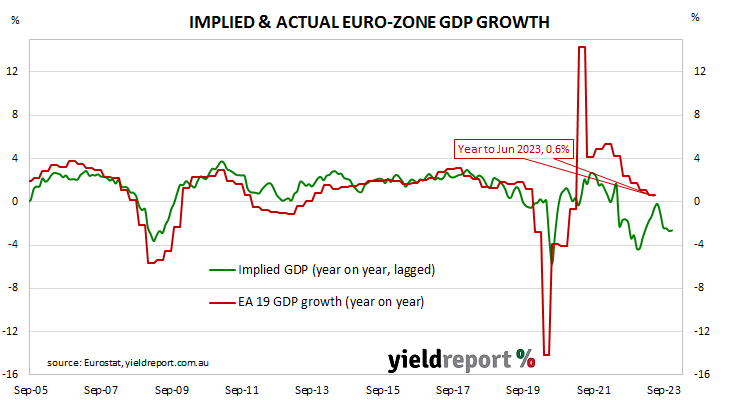ifo business climate index falls again in September, above expected figure; sentiment remains bleak, German economy treading water; current conditions index down, expectations index up; expectations index implies euro-zone GDP contraction of 2.6% in year to December.
Following recessions in euro-zone economies in 2009/2010, the ifo Institute’s Business Climate Index largely ignored the European debt-crisis of 2010-2012, mostly posting average-to-elevated readings through to early-2020. However, the index was quick to react in the March 2020 survey, falling precipitously before recovering quickly in subsequent months. Readings through much of 2021 generally fluctuated around the long-term average before dropping away in 2022.
According to the latest report released by ifo, German business sentiment has had a fifth consecutive month of decline after increasing in the six months prior to May. September’s Business Climate Index recorded a reading of 85.7, above the generally expected figure of 85.2 but slightly below August’s final reading of 85.8. The average reading since January 2005 is 96.5.
“Sentiment in the German economy remains bleak. Once again, companies were less satisfied with their current business situation,” said Clemens Fuest, President of the ifo Institute. “However, their pessimism regarding the coming months dissipated slightly. The German economy is treading water.”
German firms’ views of current conditions deteriorated while their collective outlook improved slightly. The current situation index declined from August’s figure of 89.0 to 88.7 while the expectations index crept up from 82.7 after revisions to 82.9.
German and French long-term bond yields finished noticeably higher on the day as sovereign yields kicked higher on both sides of the Atlantic. By the close of business, the German 10-year yield had gained 8bps to 2.81% while the French 10-year OAT yield finished 6bps higher at 3.35%.
The ifo Institute’s business climate index is a composite index which combines German companies’ views of current conditions with their outlook for the next six months. It has similarities to consumer sentiment indices in the US such as the ones produced by The Conference Board and the University of Michigan.
It also displays a solid correlation with euro-zone GDP growth rates. However, the expectations index is a better predictor as it has a higher correlation when lagged by one quarter. September’s expectations index implies a 2.6% year-on-year GDP contraction to the end of December.



